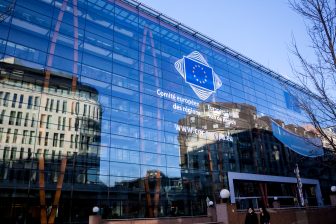
UIC heads Europe-wide Safer Level Crossings campaign
The International Union of Railways (UIC) is spearheading the Safer Level Crossings (LC) campaign, a major awareness drive which aims to improve safety, minimise risks and develop new solutions for the design of level-crossing infrastructures across rail freight and passenger networks.
Funded by the European Commission as part of its Horizon 2020 research and innovation programme, SAFER LC is a three-year project involving 17 European partner organisations across 10 countries, and was launched at UIC’s Paris headquarters.
The project will focus both on technical solutions such as smart detection devices and advanced infrastructure-to-vehicle communications systems, and human processes to adapt infrastructure design and enhance cooperation between the various stakeholders from different transportation modes, namely rail and road.
Safety and security
Jean-Pierre Loubinoux, Director General of UIC, said: “UIC has inevitably focused on matters technical and technological, but continues to evolve and remains open to new realities. Rail transport’s high levels of safety and security are part of its appeal as the sustainable transport mode of choice on our planet, on the condition that rail is able to constantly challenge itself, update its requirements, and upskill.”
A series of test pilots are planned across Europe that will demonstrate how new technological and non-technological solutions can be integrated, as well as validate their feasibility and evaluate their performance. The end goal is a series of a technical recommendations, actions humans can take and new legal frameworks. There will also be a user-friendly ‘toolbox’ which integrates the project’s results to help rail managers improve safety.
Freight-specific
Statistical information from European member states on level crossing incidents involving freight trains is patchy, but Belgium, which has around 1750 level crossings nationwide, is one country which provides freight-specific information. Of these crossings, most are public rather than private, and the majority are equipped with a mixture of active signalling such as lights, bells and/or gates.
National rail infrastructure manager Infrabel says despite the annual awareness campaigns warning road users to observe crossing signs, the number of accidents remained stable in 2016, with 45 accidents, the same as 2015. Of these, 18 were freight-related, but 17 were on port rail lines. The Port of Antwerp accounted for most of these, with 15 incidents, and as a result the port is running a campaign during the spring on the Left Bank and Right Bank areas, where there are more than 200 crossings. The main cause of level crossing incidents, says Infrabel, is still non-compliance of crossing controls by car drivers.
Design phase
“Safety and security are not things tacked on at the end of the process – they are part and parcel of both the operation of rail transport and its efficiency, assuming they are integrated appropriately into the transport service from the design phase on,” added Jean-Pierre Loubindoux.
“After addressing the the primary cause of fatalities on railway property (suicide and trespass) in the EU Restrail project which ended in September 2014, it was logical that we then address the second, i.e. deaths at level crossings, with the SAFER-LC project.
Manage disruptions
“However, level crossings need to be seen for what they are, and seen in the round – despite often being viewed as rail accidents at first sight, they are first and foremost road accidents which occur at a critical, sensitive part of the network,” added Loubindoux. “The SAFER LC project takes an exemplary approach in this respect, since it stresses the need for the rail and road systems to share information and data, so that each party can manage disruptions caused by the other in optimum fashion – this balance should be emphasised.”





